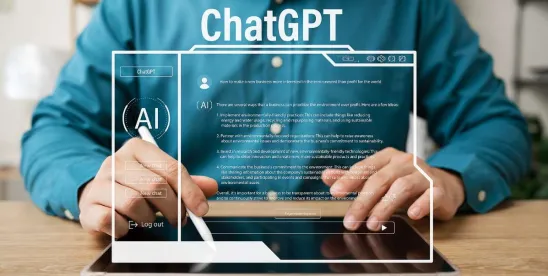The use of artificial intelligence (AI) continues to quickly spread across the manufacturing industry, and employers are tasked with understanding and managing the impact and capabilities of this burgeoning technology. While manufacturers are using AI tools to streamline manufacturing processes, enhance productivity, improve health and safety, and create a more engaged and thriving workforce focused on high-value tasks, ChatGPT and other AI large language models (LLMs) are beginning to infiltrate other departments in the workplace, including employee communications with Human Resources, creating new challenges. Similar to how “WebMD” is often used to address and self-diagnose health issues, employees may now be turning to ChatGPT and other LLMs as advocates to advance their workplace issues.
Human Resources professionals tasked with resolving critical workforce management issues, such as administering employee leaves of absence, collecting and maintaining employee personnel information, and ensuring compliance with wage and hour laws, should be aware and remain vigilant that employees may be utilizing ChatGPT or other LLMs to communicate with Human Resources on their behalf. Human Resources professionals should carefully consider how to engage with those employees who may be using AI tools to communicate with them about legal issues with which they are unfamiliar, or even to assert legal claims.
Manufacturers should be mindful that, as with any AI tool, the ability of ChatGPT or other LLMs to produce accurate, unbiased responses is limited based on the amount of data on which it has been trained. Therefore, while an employee may be relying on ChatGPT to craft an email to send to Human Resources about leave entitlement, the information provided by the AI tool might not be accurate. Human Resources professionals should ensure that they carefully review such communications and prepare to engage the employee in a constructive dialogue regarding legal requirements and the employer’s relevant policies. A response may also require educating the employee, where the employee may be relying on inaccurate information.
In such cases, depending on the specific circumstances, employers should consider reminding employees of the employer’s policies governing the permitted use of AI tools in the workplace and the risks of using such technology.
As the use of ChatGPT and other LLMs continues to expand together with AI tools throughout the manufacturing industry, employers are encouraged to consider ways to monitor and address employees’ use of such technologies to ensure compliance with applicable law and the employer’s policies while also strengthening employee relations.
This post was co-authored by Labor + Employment Group lawyer Christopher Costain.



 />i
/>i
